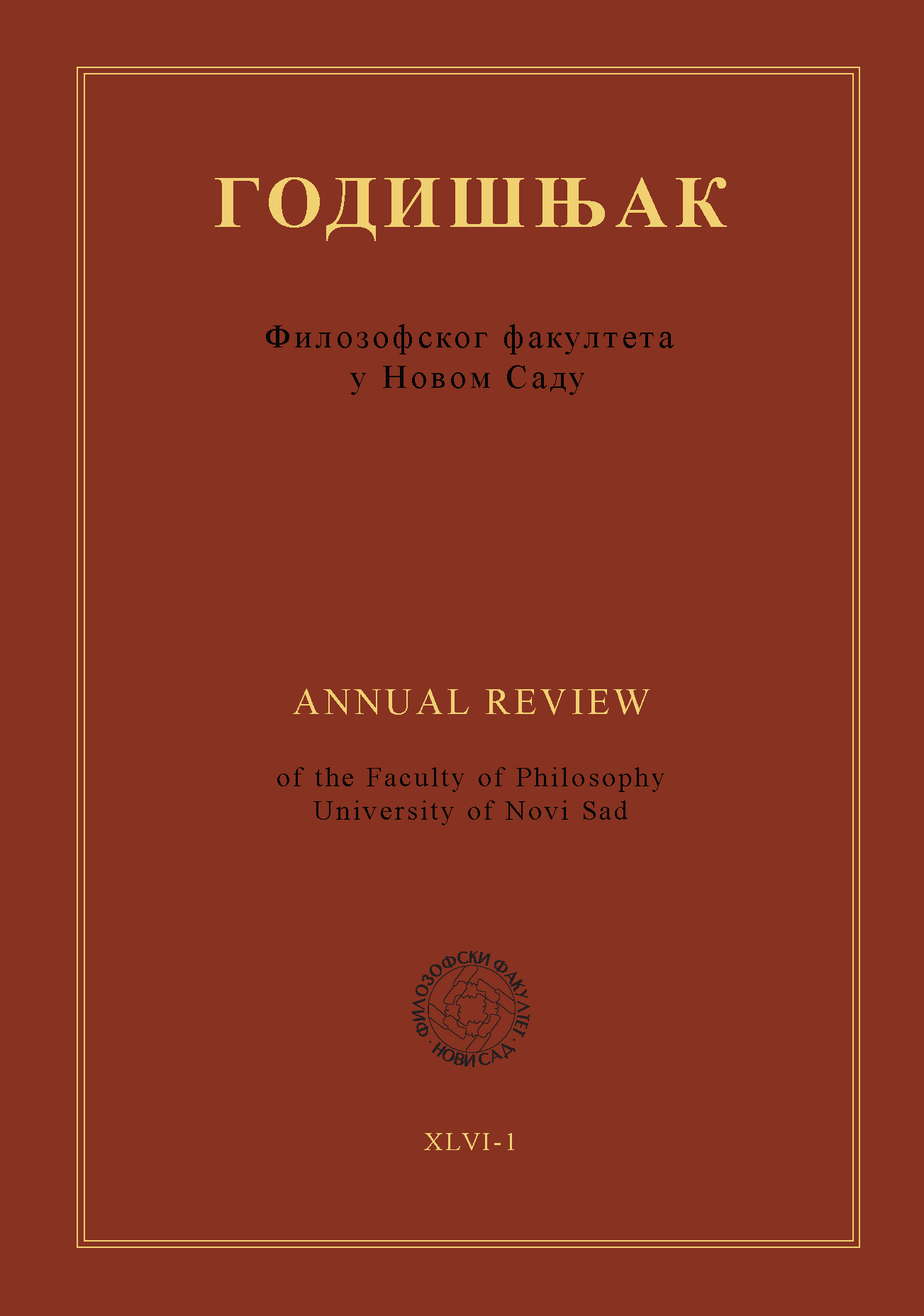DICTIONARY OF THE KHAZARS TRANSLATION OF SECONDARY LANGUAGE VARIETIES FROM SERBIAN LANGUAGE INTO ITALIAN
Main Article Content
Abstract
The paper analyses the problems of literary translation in the cases where the original text is characterized by the presence of a linguistic variety, namely the use of multiple dialects and pronunciations of one specific language. In these cases, the problem every translator faces is the question if the original linguistic diversity should be maintained in the translation, and if so, by what means, or should it be neutralized and translated using only the standard dialect or pronunciation. The paper researches this specific translation problem analyzing two different translations of the novel Dictionary of the Khazars by Serbian author Milorad Pavić into Italian. The analysis also cites examples of the English translation of the novel, comparing the choices of the English translator with the Italian ones. The results of the comparative translation analysis show that both the English and the Italian translators do not use code-mixed texts in the translation and therefore neutralize the linguistic diversity of the original text. Milorad Pavić uses the Ijekavian and Ikavian pronunciation for the depiction of specific literary characters whose way of speaking is emphasized and describes the time and territory they are living in, and which differentiates from the standard usage of language, that is the Ekavian pronunciation. The paper offers an alternative translation approach, one that preserves the linguistic variety of the original in translation, and therefore recreates the linguistic richness of Pavić’s literary characters also in a foreign language.
Downloads
Metrics
No metrics found.
Article Details

This work is licensed under a Creative Commons Attribution-ShareAlike 4.0 International License.
References
Pavić, M. (1988). Dizionario dei Chazari: Romanzo Lessico. Traduzione dal serbo di Branka Ničija. Milano: Garzanti Editore.
Pavić, M. (2012). Hazarski rečnik: roman leksikon u 100.000 reči. Beograd: Zavod za udžbenike.
Pavić, M. (2013). Dictionary of the Khazars: a lexicon novel in 100.000 words. Translated from the Serbian by Christina Pribićević Zorić. Beograd: Zavod za udžbenike.
Pavić, Milorad (2020), Dizionario dei Chazari: Romanzo-lexicon in 100.000 parole, Traduzione di Alice Parmeggiani, Roma: Edizioni Voland.
LITERATURA
Auer, P. (ed.) (1998). Code-Switching in Conversation. London and New York: Routledge.
Avirović, Lj. (1993). Danubio tra persuasione e persuazija. In: Avirović, Lj.-Dodds, J. (eds.) (1993). Umberto Eco, Claudio Magris autori e traduttori a confronto. Atti del
Convegno Internazionale Trieste, 27-28 novembre 1989. Udine: Campanotto Editore. 203-214.
Bassnett, S. (2002). Translation studies. London and New York: Routledge.
Berman, A. (2004). Translation and the Trials of the Foreign. Translated by Lawrence Venuti. In: Venuti, L. (ed.) (2004). The Translation Studies Reader. London: Routledge. 284-297.
Catford, J.C. (1965). A Linguistic Theory of Translation: An Essey in Applied Linguistics. Oxford: Oxford University Press.
Cincotta, M. S. (1996). Naturalizing Linguistic Aliens: The Translation of Code-Switching. Conference on Interpreting and Translation. Sydney: University of Western Studies.
Diadori, P. (2012). Teoria e tecnica della traduzione: Strategie, testi e contesti. Milano: Mondadori Education.
Doria, M. (1987). Grande dizionario del dialetto triestino storico, etimologico, fraseologico. Trieste: Il Meridiano.
Eko, U. (2011). Kazati gotovo istu stvar: Iskustvo prevođenja. Beograd: Paideia.
Kosovitz, E. (1890). Dizionario Vocabolario del dialetto triestino e della lingua italiana. Trieste: Tip. Figli di C. Amati.
Newmark, P. (1988). A Textbook of Translation. New York: Prentice-Hall International.
Tomasović, M. (1993). La trasposizione dei dialettalismi e degli arcaismi nella versione croata di “Danubio”. In: Avirović, Lj.-Dodds, J. (ed.) (1993). Umberto Eco, Claudio Magris autori e traduttori a confronto. Atti del Convegno Internazionale Trieste, 27-28 novembre 1989. Udine: Campanotto Editore. 227-232.




